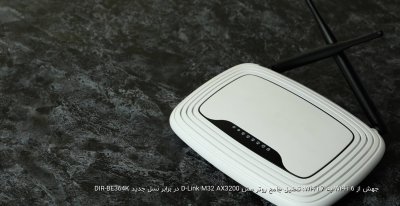شما اگه خاسته باشين تو يه كشور اروپايي يا آمريكايي (مثلا كانادا) به عنوان انيماتور استخدام بشين اول از همه از شما مدرك يه كالج رو ميخان بعد نمونه كار بعد سابقه كار (حداقل دو سال)
حالا ميشه يه كالج معتبرتر از پيكسار كه منتور هم يكي از شاخه هاش هست رو بگين؟(اكثر معلمان منتور زماني در پيكسار بودن و الان هم در يه جاي معتبر دارن كار ميكنن . چه چيزي بهتر از اين كه استاد شما يكي از انيماتور هاي نمو . آپ يا شگفت انگيزها است)
در ضمن ميشه تحقيق كنين عمر انيميشن 3بعدي از زمان شكوفايش چند سال بوده ؟ نكنه توقع دارين يه پيرمرد با نيم متر ريش و يه عصا تو دستش براتون درس بده؟
من كتاب animation survival kit رو كامل خوندم(ترجمه فارسي كتاب رو هنوز در بازار نديدم)
اين متن پايين رو كه چيكيده كامل و مفيدي از كل كتاب هست رو پيدا كردم و براتون گذاشتم
البته بايد ترجمش ميكردم ولي متاسفانه وقت ندارم.(در اولين فرصت حتما ترجمه كاملي از اين متن و بعضي نكات ديگه رو ميذارم)
اگه واقعا علاقمند به پيشرفت هستيم خط به خط اين متن كه نكات مهم و اساسي كل كتاب هست رو بايد بفهميم و درك كنيم.
بازم شرمنده وسط مسابقتون پست زدم. اگه سوالي در مورد متن داشتين خوشحال ميشم كمك كنم.
[FONT=arial,helvetica]ANIMATION ARCHIVES[/FONT] [FONT=arial,helvetica]Richard Williams Animation Master Class Notes[/FONT]
[FONT=verdana,arial,helvetica]Taken by Dave Bailey[/FONT]
[FONT=arial,helvetica][/FONT]
[FONT=arial, helvetica] Note: any reference to timing is based on 24 fps[/FONT]
[FONT=arial, helvetica] "Sophisticated Use of the Basics" -- Animation Master Class by Richard Williams[/FONT]
[FONT=arial, helvetica] What is animation?[/FONT]
[FONT=arial, helvetica] Change is the basis of all animation [/FONT]
[FONT=arial, helvetica] There are two types of animation Morphing and the type that gives the illusion of life. [/FONT]
[FONT=arial, helvetica] Animation is all in the timing and spacing [/FONT]
[FONT=arial, helvetica] You must show where the weight is, where it is coming from and where the weight is going to.[/FONT]
[FONT=arial, helvetica] KEY FRAMES - are the story telling frames (The story board drawings)[/FONT]
[FONT=arial, helvetica] Frames where the character makes contact (heel strike pose, touching an object, etc.)[/FONT]
[FONT=arial, helvetica] EXTREMES - are the where there is a change of direction. They are NOT Key Frames.[/FONT]
[FONT=arial, helvetica] BREAKDOWNS are the middle or passing position.[/FONT]
[FONT=arial, helvetica] On breakdowns always add an extra bit of movement -- almost anything will work.[/FONT]
[FONT=arial, helvetica] Don't go from A to B. Go from A to Z to B[/FONT]
[FONT=arial, helvetica] Methods of Working: 1) Straight-Ahead - Just start and see what happens. (Creative but lacks control) [/FONT]
[FONT=arial, helvetica] 2) Pose to Pose - (Lots of control but restricts creativity) [/FONT]
[FONT=arial, helvetica] 3) The "Best" Method - A combination of "Pose to Pose" and "Straight Ahead".[/FONT]
[FONT=arial, helvetica] Steps to take before animating: 1) Before working turn off all other stimulus --"UNPLUG" [/FONT]
[FONT=arial, helvetica] 2) Write down what you want to do [/FONT]
[FONT=arial, helvetica] 3) Act it out [/FONT]
[FONT=arial, helvetica] 4) Work out the timing [/FONT]
[FONT=arial, helvetica] 5) Then animate[/FONT]
[FONT=arial, helvetica] The "Best" animating method Step 1 - Do the KEY frames (the story telling poses) [/FONT]
[FONT=arial, helvetica] Step 2 - Do the frames that have to be there (the contact frames) [/FONT]
[FONT=arial, helvetica] Step 3 - Do the breakdown poses (passing/middle poses) Don't forget to add that extra bit of action. [/FONT]
[FONT=arial, helvetica] Step 4 - Do Straight Ahead Runs of different parts in hierarchical order[/FONT]
[FONT=arial, helvetica] Testing along the way.[/FONT]
[FONT=arial, helvetica] (Hips first followed by legs then arms then head. Drapery is always last)[/FONT]
[FONT=arial, helvetica] GENERAL GUIDES & TIPS[/FONT]
[FONT=arial, helvetica] The human eye can not see (comprehend) an action done in less then 5 frames, for an action to be readable it must be done in 5 or more frames.[/FONT]
[FONT=arial, helvetica] The way I under stood this to mean was that the 5 frames could include the anticipation of the movement. For example a character could be held in a 5 frame anticipation and be off the screen in the 6th. The use of ease-in or ease-out would also be included in those 5 frames.[/FONT]
[FONT=arial, helvetica] Mr. Williams also stressed that all the things he was teaching were general guidelines and theories and one should always have the courage to break the rules. Experiment and test often, the only thing that matters is if the final animation works![/FONT]
[FONT=arial, helvetica] Never exit the frame in less than 5 frames.[/FONT]
[FONT=arial, helvetica] On in-betweens don't animate in a straight-line use curved paths[/FONT]
[FONT=arial, helvetica] For fast/hard impacts, skip the actual impact frame. Go immediately from action to reaction.[/FONT]
[FONT=arial, helvetica] A character should never take off or land on both feet at the same time.[/FONT]
[FONT=arial, helvetica] Blinks frequently happen on a passing pose.[/FONT]
[FONT=arial, helvetica] There are generally two frames between the open and closed positions of an eye during a blink.[/FONT]
[FONT=arial, helvetica] WALKS & RUNS[/FONT]
[FONT=arial, helvetica] On a walk only one foot leaves the ground at a time[/FONT]
[FONT=arial, helvetica] On a run both feet leave the ground for at least 1 frame and the character is always down on the passing pose.[/FONT]
[FONT=arial, helvetica] Always create your heel strike poses first.[/FONT]
[FONT=arial, helvetica] A normal walk is on march-time - a heel strikes the ground every 12 frames[/FONT]
[FONT=arial, helvetica] A Hollywood cartoon walk heel-strike is every 8 frames[/FONT]
[FONT=arial, helvetica] A stroll heel-strike is every 16 frames[/FONT]
[FONT=arial, helvetica] A normal run heel-strike is every 8 frames[/FONT]
[FONT=arial, helvetica] Heel-strikes on the fastest run possible occurs every 4 frames (this only works for small characters)[/FONT]
[FONT=arial, helvetica] OVERLAPPING ACTION[/FONT]
[FONT=arial, helvetica] Overlapping action is action that does not happen all at once.[/FONT]
[FONT=arial, helvetica] I changed the word "breaking" to "bending" in the line below while taking my notes. It helped me differentiate between "A successive breaking of joints" - (breaking up the movement of an articulated object) and "breaking a joint" - (unnatural bending) Both concepts are used for the same purpose of getting smooth curvaceous movement. The whole idea of the broken joint is that it is unnoticeable to the eye, so, yes it can be used for realistic animation.[/FONT]
[FONT=arial, helvetica] A successive bending of joints limber up movement -- It's an unfolding action. If twinning is happening, think about what parts can be delayed.[/FONT]
[FONT=arial, helvetica] Another example of overlapping action is delaying the movement of loose fatty tissue (Jowls) behind the quicker moving muscle and bone (skull).[/FONT]
[FONT=arial, helvetica] COUNTER ACTION[/FONT]
[FONT=arial, helvetica] A counter action is where one part moves in the opposite direction to counter the weight and thrust of another part.[/FONT]
[FONT=arial, helvetica] BREAKING JOINTS[/FONT]
[FONT=arial, helvetica] The unnatural bending of joints to obtain curvaceous movement with straight line segments.[/FONT]
[FONT=arial, helvetica] If the successive frames with broken joints are less than five and less then the number of frames with non-broken joints the distortion will not be noticed.[/FONT]
[FONT=arial, helvetica] To really add SNAP to a movement put one "crazy" position the frame before the extreme position.[/FONT]
[FONT=arial, helvetica] The word "crazy" was Mr. Williams' but I think it's a bit misleading. It is not an extreme. It is a slightly out of joint position a frame before the Extreme. After the extreme you would ease into a held position.[/FONT]
[FONT=arial, helvetica] He gave the following example: (Please pardon my crude diagrams)[/FONT]
[FONT=arial, helvetica] The example he gave was an arm making a pointing motion. Starting with the arm bent at the elbow (V), hand pointing up. On the end frame 7 the arm is straight out (---), hand pointing forward. On frame 6 the hand is close to its final position but the elbow is broken in a reverse bend upward about 20 degrees (^-). I would not really call frame 6 an extreme more like a semi out of place in-between.[/FONT]
[FONT=arial, helvetica] DIALOGUE[/FONT]
[FONT=arial, helvetica] Consonants must have 2 frames to read - steal from the preceding sound if needed. [/FONT]
[FONT=arial, helvetica] Hit the mouth accent on the vowel. [/FONT]
[FONT=arial, helvetica] Vowels need 2 poses an accent pose and a cushion pose. [/FONT]
[FONT=arial, helvetica] Pop the mouth open on vowels with an accent pose and immediately ease into a cushion pose [/FONT]
[FONT=arial, helvetica] "Boil it down" - Keep the mouth movement simple. [/FONT]
[FONT=arial, helvetica] Form the words (watch singers) [/FONT]
[FONT=arial, helvetica] Lift the head 3-4 frames in advance of the modulation. [/FONT]
[FONT=arial, helvetica] Upper teeth are anchored to the skull. [/FONT]
[FONT=arial, helvetica] Women usually show upper teeth only. [/FONT]
[FONT=arial, helvetica] Men (50/50) show upper or lower teeth only a rare few show both. [/FONT]
[FONT=arial, helvetica] The tongue is hooked at the back of the lower jaw, not stuck in the throat [/FONT]
[FONT=arial, helvetica] Never in-between the tongue, always snap it from one position to the next. [/FONT]
[FONT=arial, helvetica] When giving dialogue a character should be progressing (or regressing) somewhere. [/FONT]
[FONT=arial, helvetica] Get the body action right then add the mouth.[/FONT]
[FONT=arial, helvetica] Break up the action and the dialog - do one thing at a time! For example talk then point or point then talk[/FONT]
[FONT=arial, helvetica] Animate dialogue on level sync, then in post, test delaying the voice audio by approximately 2 frames to see what works best.[/FONT]
. از مسابقه بعدي هم كاپ قهرماني بزاريم و هم جايزه هاي ديگه ( مثل مسابقه Fast Modeling ) اينهمه جايزه داره . ما هم ثابت كرديم كه تعداد بچه هامون زيادن و خوب كار ميزنن ( با اينكه هيچ كدوممون توي امضاء تبليغات مسابقه رو نزاشته بوديم
) اگر جايزه بزارين كارها خيلي بهتر هم ميشه و رقابتها بالا ميره و همچنينرفاقت ها
، من خودم با كلي از همين بچه ها احساس صميميت ميكنم و دوستشون دارم . . . !!












 )
)








